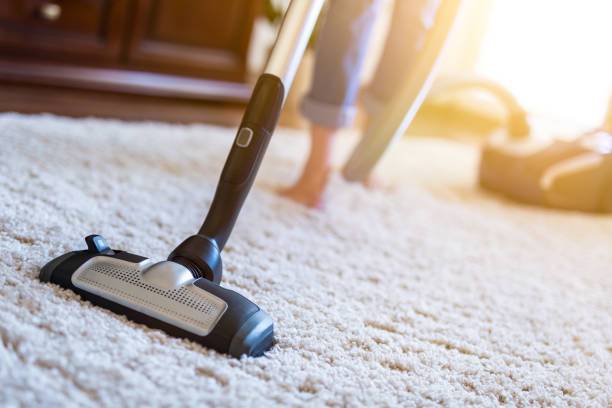The Invention and History of the Vacuum Cleaner
Introduction
The vacuum cleaner, an essential household appliance in modern times, revolutionized the way people clean their homes. Its history is a testament to human ingenuity and the relentless pursuit of improving daily life. From rudimentary mechanical devices to sophisticated, automated machines, the evolution of the vacuum cleaner reflects broader technological advancements and changing societal needs.
Early Cleaning Methods
Before the advent of vacuum cleaners, people relied on manual cleaning methods such as sweeping and beating rugs and carpets. Brooms, brushes, and carpet beaters were common tools. However, these methods were labor-intensive and often ineffective in removing dust and small particles deeply embedded in fabrics and floor coverings.
The First Mechanical Cleaners
The journey toward the modern vacuum cleaner began in the 19th century with the invention of mechanical cleaning devices. In 1860, Daniel Hess of West Union, Iowa, patented a machine called a “carpet sweeper.” Hess’s invention used a rotating brush and an elaborate system of bellows to generate suction and collect dust. Although it was a significant improvement over manual methods, it was still far from the vacuum cleaners we know today.
In 1869, Ives W. McGaffey of Chicago patented the “Whirlwind,” a hand-pumped vacuum cleaner. The Whirlwind was a wooden contraption operated by a hand crank that generated suction. It was portable and relatively effective, but it required considerable effort to use, limiting its popularity.
The Birth of the Electric Vacuum Cleaner
The true breakthrough came at the turn of the 20th century with the introduction of electric power. Hubert Cecil Booth, a British engineer, is credited with inventing the first powered vacuum cleaner in 1901. Booth’s machine, known as the “Puffing Billy,” was a large, petrol-powered device mounted on a cart and operated by a team. It used a powerful motor to create suction and could clean large areas quickly. However, its size and complexity made it impractical for domestic use.
In 1907, James Murray Spangler, a janitor from Canton, Ohio, invented the first portable electric vacuum cleaner. Spangler, who suffered from asthma, sought a way to reduce dust and allergens in his work environment. He devised a simple, lightweight machine using an electric fan motor, a soapbox, a broom handle, and a pillowcase to collect dust. Recognizing the commercial potential of his invention, Spangler patented it and later sold the rights to William H. Hoover, whose company, the Hoover Company, became synonymous with vacuum cleaners.
Mass Production and Popularization
The early 20th century saw rapid advancements in vacuum cleaner technology and widespread adoption. The Hoover Company played a crucial role in popularizing the vacuum cleaner, introducing innovative designs and effective marketing strategies. Hoover’s vacuum cleaners featured improved suction power, more efficient dust collection, and user-friendly designs, making them a household staple.
Other companies, such as Electrolux, Kirby, and Eureka, also entered the market, contributing to the vacuum cleaner’s evolution. Electrolux, founded by Swedish entrepreneur Axel Wenner-Gren, introduced the first canister vacuum cleaner in 1921. The canister design, with a separate motor unit and flexible hose, offered greater maneuverability and versatility.
Post-War Innovations and Automation
The mid-20th century witnessed significant technological advancements and diversification in vacuum cleaner designs. Upright vacuum cleaners, with a motor and dust collection system integrated into a single unit, became popular for their convenience and effectiveness on carpets. Canister vacuums continued to evolve, offering specialized attachments and increased power.
In the latter half of the 20th century, the focus shifted towards improving efficiency, reducing noise, and incorporating advanced filtration systems. High-efficiency particulate air (HEPA) filters were introduced, capable of trapping microscopic particles and allergens, making vacuum cleaners more effective at improving indoor air quality.
The advent of robotics and automation in the late 20th and early 21st centuries brought about a new era in vacuum cleaning technology. In 2002, iRobot introduced the Roomba, a compact, autonomous robotic vacuum cleaner. Equipped with sensors and algorithms, the Roomba could navigate and clean rooms independently, marking a significant leap towards automated home cleaning.
Modern Developments and Future Trends
Today, vacuum cleaners come in various forms, including upright, canister, handheld, stick, and robotic models, catering to different cleaning needs and preferences. Cordless and bagless designs have gained popularity for their convenience and ease of use. Advanced features such as smart connectivity, app control, and artificial intelligence have further enhanced the functionality and user experience.
The future of vacuum cleaners is likely to see continued advancements in automation, energy efficiency, and sustainability. Developments in AI and machine learning may lead to even smarter and more efficient cleaning robots. Additionally, there is a growing emphasis on eco-friendly designs, with manufacturers exploring sustainable materials and energy-saving technologies.
Conclusion
The history of the vacuum cleaner is a fascinating journey of innovation and adaptation. From humble mechanical beginnings to sophisticated, intelligent machines, it have transformed the way we clean our homes. As technology continues to advance, and it will undoubtedly evolve further, continuing to make our lives cleaner and more convenient.

